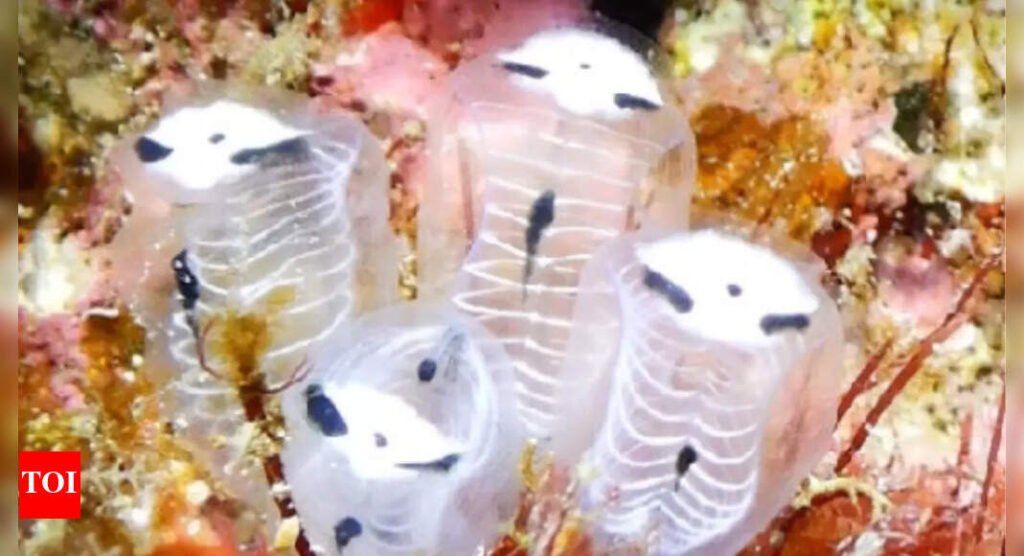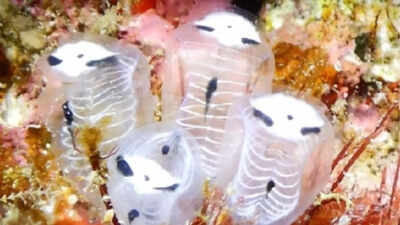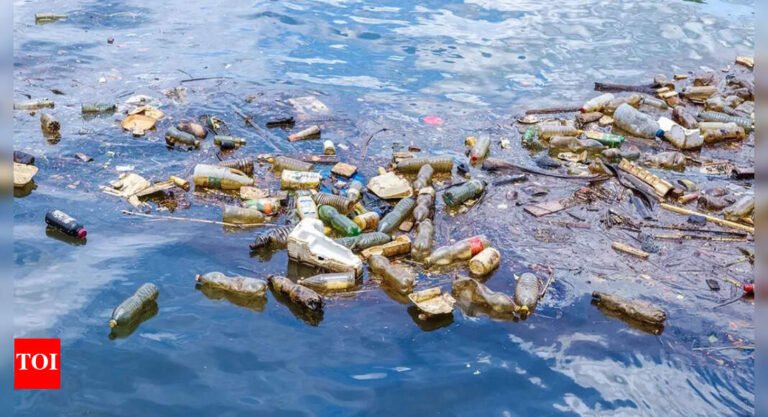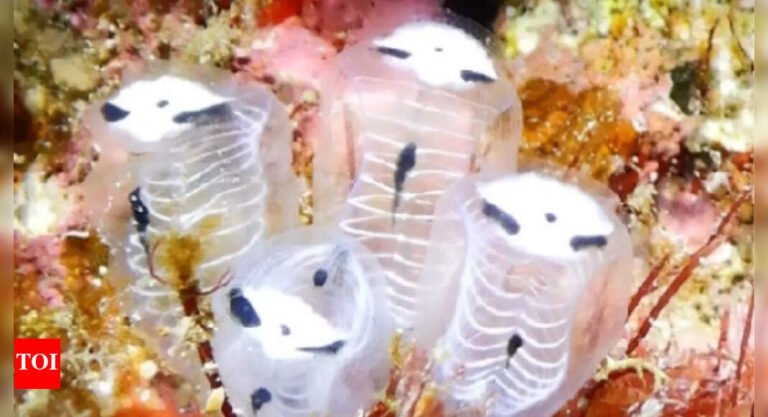
In the vibrant waters off Japan’s Kumejima Island, scientists have discovered a bizarre new marine species that’s got the internet buzzing. The skeleton panda sea squirt, officially named Clavelina ossipandae. This tiny, transparent creature looks like a baby panda dressed up as a skeleton. With black eye-like spots and white “ribs” running across its body, it’s one of the strangest yet cutest sea creatures ever found. And now, it’s making waves in both the marine biology world and social media. The discovery was formally published in Species Diversity by Naohiro Hasegawa and Hiroshi Kajihara, describing Clavelina ossipandae as a transparent colonial ascidian with white ‘rib‑like’ vessels and panda‑face markings based on specimens collected off Kumejima Island, Okinawa. Here’s everything you need to know about this weird panda-like sea creature that’s equal parts creepy and adorable.
What is the skeleton panda sea squirt?
- Found in: Coral reefs near Kumejima Island, Japan
- Scientific name: Clavelina ossipandae
- Size: Around 2 cm
- Discovered by: Dr Naohiro Hasegawa, Hokkaido University (officially described in 2024)
The skeleton panda sea squirt is a newly discovered species of colonial ascidian, a marine invertebrate also known as a sea squirt. These filter-feeding animals may look simple, but they’re vital to ocean ecosystems. This particular species earned its nickname because of its striking appearance: two dark round patches that resemble panda eyes and white streaks that mimic rib bones. They live in colonies of up to four zooids (individual animals) and are only around 2 centimeters long. Despite their small size, their bizarre appearance made them stand out to divers and eventually scientists.
Why does the skeleton panda sea squirt look like a panda skeleton?
The creature’s “skeleton” effect comes from white blood vessels that run horizontally across its translucent body, almost like ribs. Meanwhile, dark pigmentation at the top of its body looks like eyes and a nose, giving it the panda vibe. The name ossipandae is Latin-based: “ossi” means bone and “pandae” refers to panda, making the name literally translate to “panda bones.” These markings likely have no specific function, but they’ve sparked curiosity among scientists and artists alike. It’s a rare example of marine life resembling terrestrial animals in such a surreal way.
How was Clavelina ossipandae discovered?
The first photos of this panda-like sea creature were actually shared on social media by Japanese divers back in 2017. For years, marine enthusiasts spotted these strange little animals off Kumejima’s coast. But it wasn’t until 2018 that Dr Naohiro Hasegawa noticed them while browsing diver blogs. He was intrigued enough to start collecting samples in 2021. After a thorough study, the species was finally described and named in the scientific journal Species Diversity in early 2024. This is a great example of citizen science in action, divers and hobbyists unknowingly helped identify a new species just by sharing underwater snapshots.
Habitat and behaviour of the skeleton panda sea squirt
These sea squirts live at a depth of around 10–20 metres near coral reefs, where ocean currents are strong. They attach themselves to hard surfaces like rocks or coral and feed by filtering plankton and bacteria from seawater, kind of like natural water purifiers.Though small, they play an important role in marine ecosystems by helping maintain water quality and supporting biodiversity.
Why this discovery matters
New marine species are always exciting, but this one is visually unique, increasing public interest in ocean life.
- Citizen science success: Casual diver photos led to real scientific discovery.
- Biodiversity indicator: Discovering such species tells us that coral reefs still hold many secrets and need to be protected.
In a time when marine life is under threat from climate change and pollution, the discovery of Clavelina ossipandae is a reminder of how much wonder is still hidden beneath the waves. The discovery of the skeleton panda sea squirt might sound like something out of a Pokémon game, but it’s very real and seriously cool. Whether you’re a marine biology nerd or just here for the panda aesthetics, this weird little creature proves that nature always has a few surprises left. So the next time someone tells you sea squirts are boring blobs, hit them with this fun fact: one of them is literally dressed like a panda skeleton.Also read| NASA’s X-59 supersonic jet could fly you from New York to Paris in half the time








